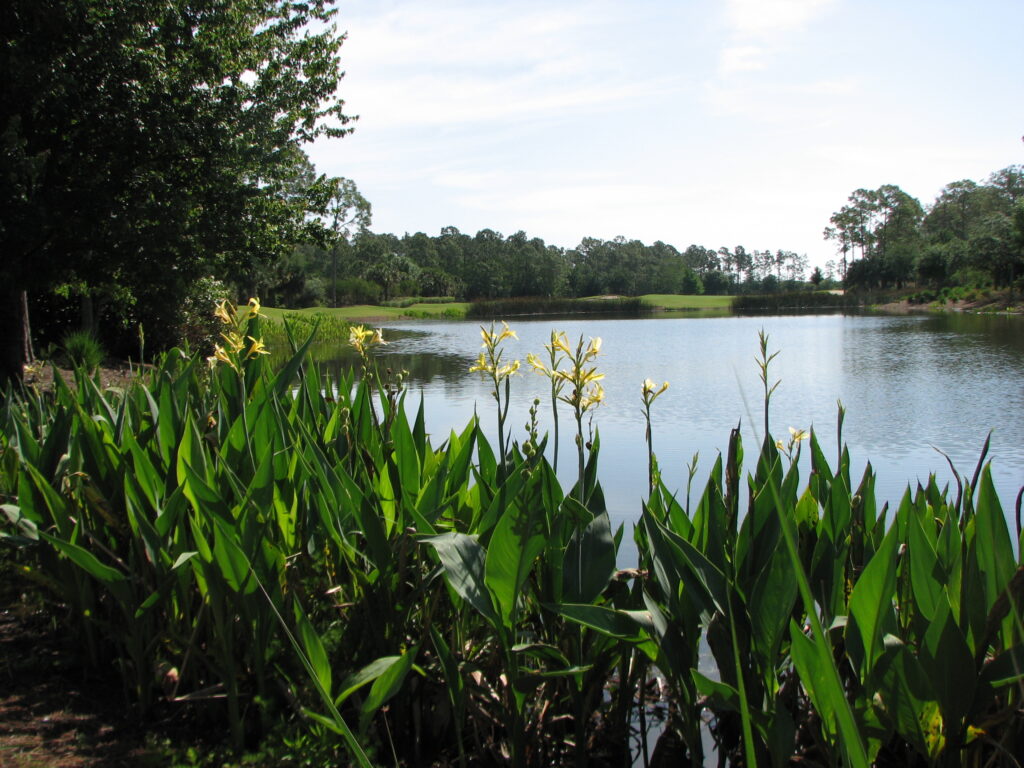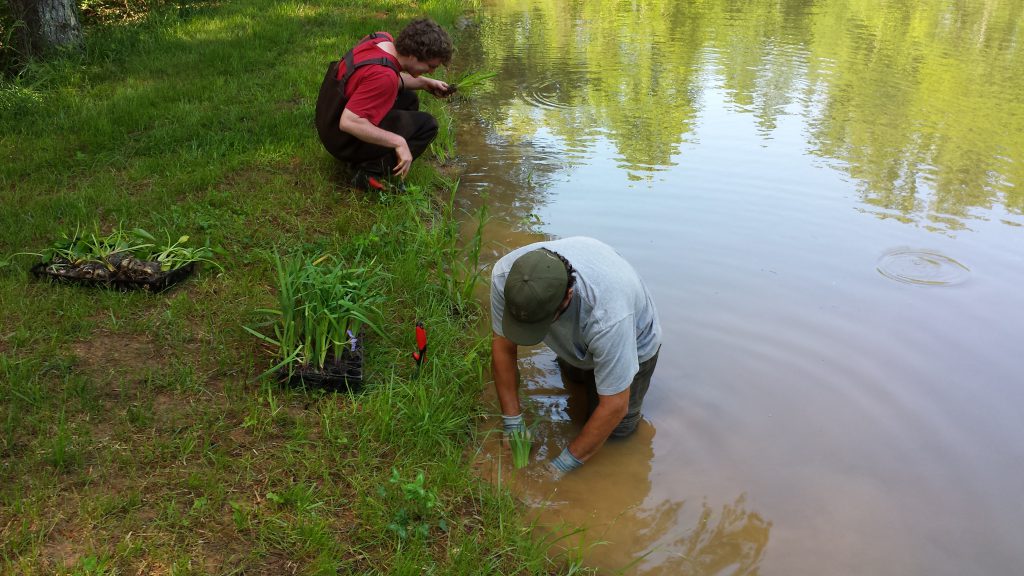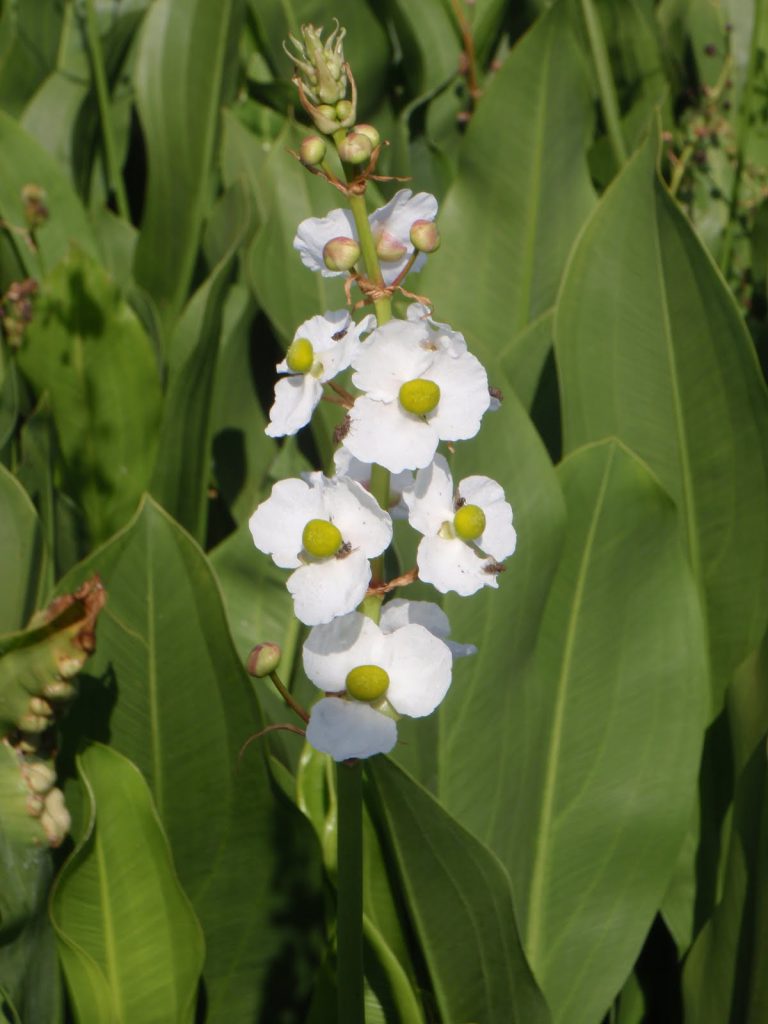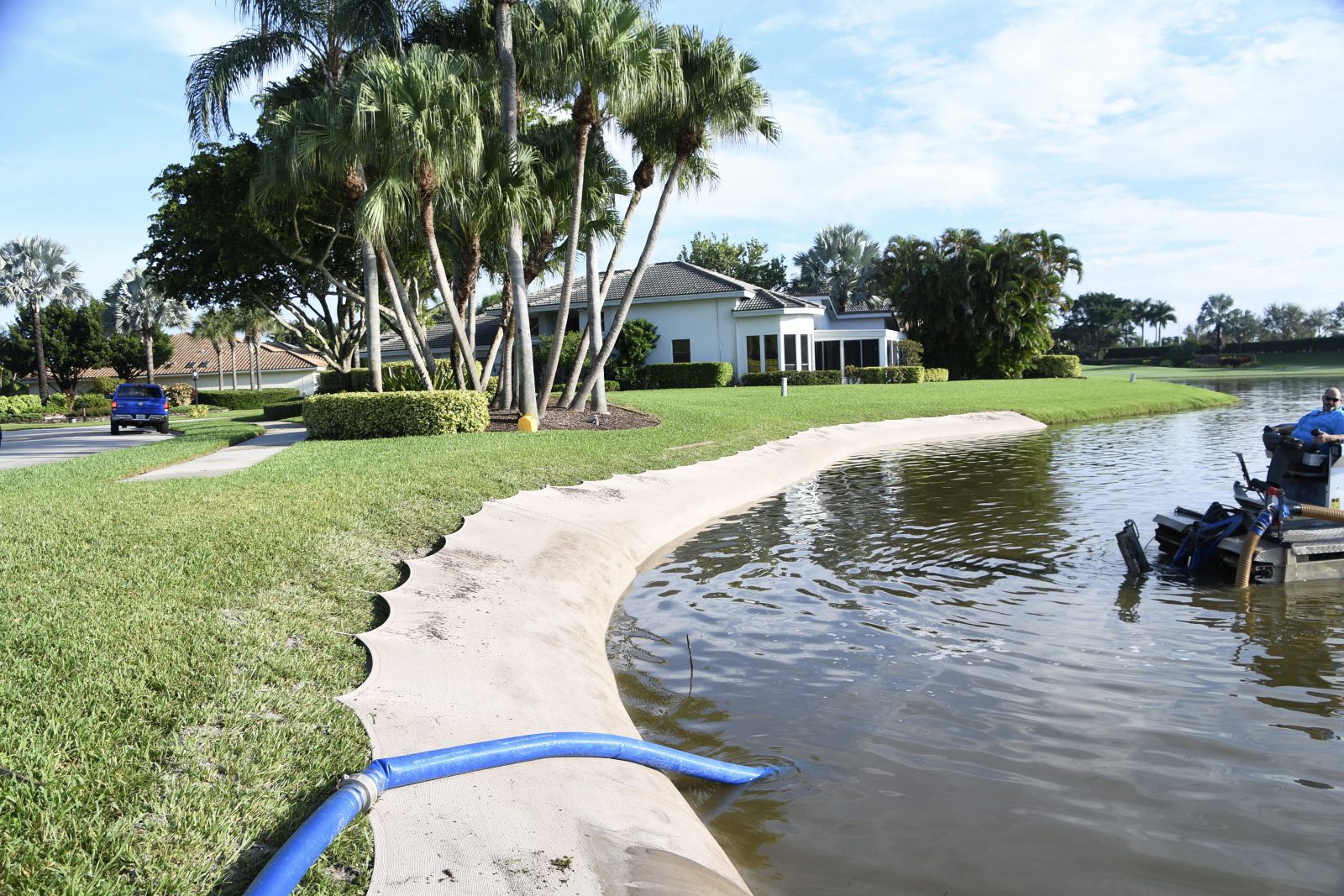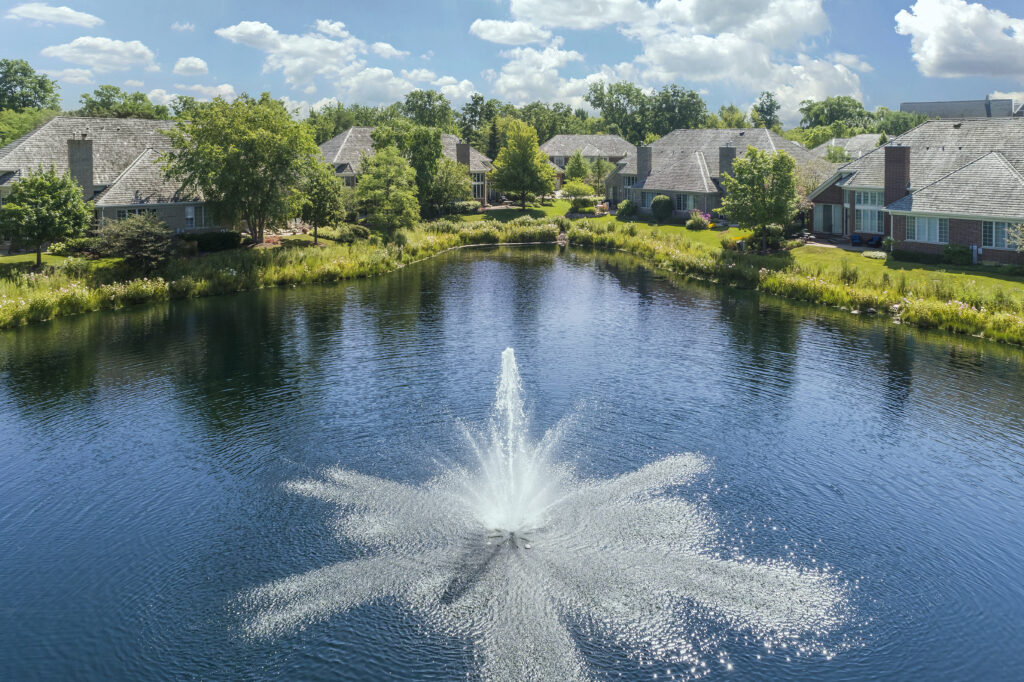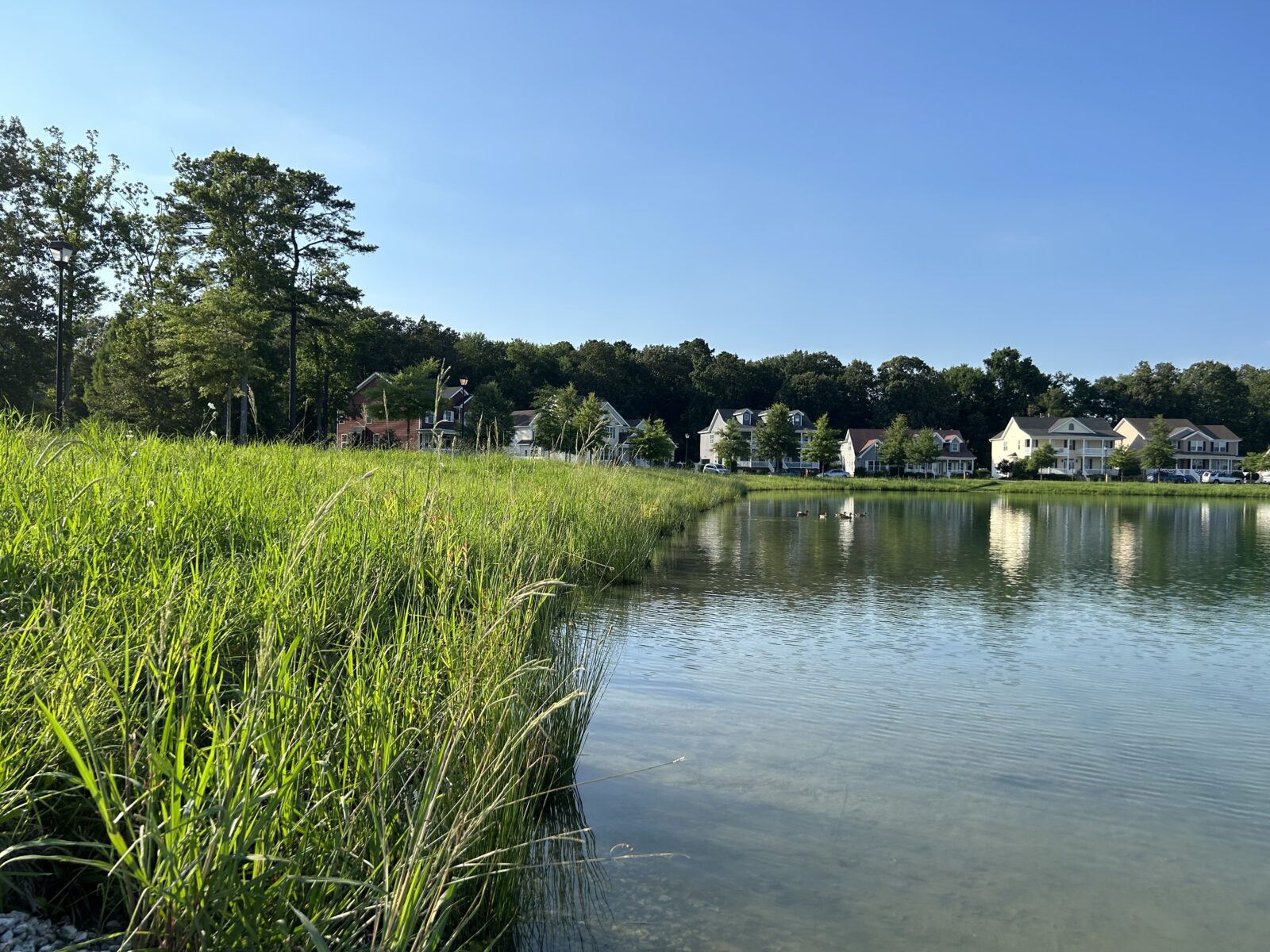
Summer Shoreline Refresh: How to Enhance and Repair Your Eroded Lake Bank
Many of life’s best memories are made around the water, either swimming, boating, picnicking, or simply enjoying the view. But idyllic waterbodies don’t happen by accident; consistent maintenance is key to keeping them healthy and beautiful all season long. One of the most important yet often overlooked management practices is shoreline upkeep. During the warmer months, lake and pond shorelines can sometimes take a back seat to other property maintenance needs. Whether your shoreline is overgrown with weeds and brush or has become bare and eroded, now is the perfect time for a refresh!
In nature, lakes and pond shorelines are protected by native flowering vegetation that forms a buffer around the perimeter and into the littoral zone (where land meets water).
Shoreline buffers help preserve shoreline health in several ways:
The Benefits of Native Shoreline Plants
The deep roots create complex webs that help physically hold soil in place. Tall, dense vegetation slows the velocity of water as it flows into the waterbody during storms, limiting further deterioration of the bank. Native vegetation also helps filter out any undesirable nutrients, pollutants, and debris that are transported by rainwater, which can support healthier water quality conditions. When water quality is balanced, algae, aquatic weeds, and toxic cyanobacteria (blue-green algae) are less likely to develop.
Furthermore, beneficial buffers deter wildlife from treading on sensitive shoreline areas while attracting butterflies, hummingbirds, and predator dragonflies that feed on mosquitoes and other undesirable insects.
Add Beauty to Your Lake with Flowering Plants
By mimicking naturally occurring shoreline buffers in our urban areas, we can enjoy these many benefits and bring beautiful pops of color to waterbodies in homeowners associations, golf courses, private properties, and public community spaces. Partnering with experienced Aquatic Experts can help ensure stakeholders select the right plant species and establish them properly around the water for a stunning shoreline refresh.
Native Plants Are Best for Shoreline Buffers
An ideal buffer should be comprised of many different types of flowering vegetation and grasses that are native to the local area. This means that buffer plants recommended in states like Florida and Texas may vary significantly from species in New England or the Pacific Northwest. Choosing the right species will help ensure your buffer thrives in harmony with the surrounding environment.
Once established, it’s vital to properly maintain the buffer. Regular trimming and debris removal will help ensure it functions properly while also providing a beautiful view of the water. Buffer vegetation must not be mowed – it should be allowed to grow knee-high or approximately 18 inches tall, so it’s important to notify lawn care professionals or community residents about shoreline management best practices.
Repair Erosion Damage with Bioengineered Living Shorelines
In some cases, shorelines that have been neglected for too long may require additional repairs before a buffer can be cultivated. Waterbodies with severe erosion, steep drop-offs, and sediment “islands” are perfect candidates for bioengineering solutions. During the repair process, Aquatic Experts collect sediment and place it within a durable mesh containment system that is physically anchored to the shoreline. It can be uniquely reshaped to seamlessly blend into the surrounding landscape, and then sodded or planted with buffer vegetation. With this approach, stakeholders can expect many years of lasting stability and rest assured that their shoreline is safe and functioning as intended.
It’s important to understand that lake and pond health starts from outside the water; shorelines are the first line of defense against external pollutants and sources of nutrients that fuel weeds and algae. In addition to cultivating a beautiful shoreline buffer, lake and pond owners can take other steps to prevent nutrient loading. Limiting the use of lawn and garden fertilizers, bagging grass clippings and yard debris, and properly disposing of pet waste can have a significant impact on water quality health.
Protect Your Water with Proactive Solutions
Stakeholders can access other proactive solutions such as nutrient remediation products, beneficial bacteria applications, fountains and aeration, and water quality testing through a tailored Annual Management Program. By partnering with professionals, lake and pond owners can spend more time enjoying the fun and beauty provided by their waterbodies and stop worrying about preventable problems like weeds, algae, and erosion.
It’s never too late for a shoreline refresh. Contact us today to design a beneficial buffer that will enhance your waterbody for the rest of the summer and beyond!
SOLitude Lake Management is a nationwide environmental firm committed to providing sustainable solutions that improve water quality, enhance beauty and preserve natural resources.
SOLitude’s team of aquatic scientists specializes in the development and execution of customized lake, stormwater pond, wetland and fisheries management programs. Services include water quality testing and restoration, algae and aquatic weed control, installation and maintenance of fountains and aeration systems, shoreline erosion control, muck and sediment removal and invasive species management. SOLitude partners with homeowners associations, golf courses, private landowners, businesses and municipalities. SOLitude Lake Management is part of Rentokil, a leading business services company, operating across the United States, Canada and Puerto Rico.
For more information, visit SOLitude Lake Management at solitudelakemanagement.com, and connect on Facebook, LinkedIn and Twitter.








